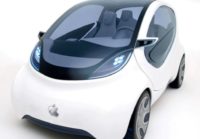Automakers, suppliers and startup ventures around the world are scrambling to develop driverless car technology. While many basic issues have already been addressed, numerous hurdles still remain.
To address some of those challenges, a pair of engineers at Worcester Polytechnic Institute (WPI) with different backgrounds have joined forces. They’re focusing on ways to make self-driving cars operate safely and efficiently in complex urban environments.
Their goal is to combine decision making and wireless communications to create a network that enables autonomous vehicles to share information about everything from traffic flow to road conditions and accidents.
Raghvendra Cowlagi, assistant professor of aerospace engineering, is focusing on autonomy, controls and motion path planning. Alexander Wyglinski, associate professor of electrical and computer engineering, is an expert on wireless communications.
Though complementary, the two areas of research are not often combined, which the WPI engineers find problematic.
“There is a huge disconnect between the self-driving car community and the connected vehicle community,” says Wyglinski, who serves as president of the IEEE Vehicular Technology Society. “We’re trying to change that.
“The more information a self-driving car can take in from cars around it will help its decision-making algorithms make the correct decision,” explains Wyglinski. “If we can unify the research, we’ll have self-driving cars making decisions they couldn’t make using radar, lidar and sensors alone.”
Part of Cowlagi and Wyglinski’s R&D effort is figuring out how to meld data from a vehicle’s onboard sensors with information being wirelessly transmitted from other nearby self-driving cars, such as what kind of traffic congestion and accidents they are detecting with their own onboard sensors.
“This is time-critical information, so we need a network that can handle that,” says Cowlagi. “The wireless link can’t have any delay, and there can be no dropped data packets, which cause network interference.
“Autonomy and controls form the ‘brain’ of a self-driving vehicle that analyzes the ‘eyes and ears’ (lidar, radar, vision and other sensors) and makes decisions,” explains Cowlagi. “There are several challenges involved with decision making. Understanding the surrounding environment is critical, such as knowing where pedestrians and other cars are.
“One of the biggest problems with autonomous cars is perception,” claims Cowlagi. “The primary technology currently used for this is lidar. We’re trying to incorporate wireless technology that supplements these onboard sensors.”
“Wireless connectivity involves technology that goes well beyond what’s visible in front, behind or beside a vehicle,” adds Wyglinski. “It enables self-driving cars to look around buildings or far down the road to get a better understanding of what the environment looks like. It’s a critical data source for the onboard intelligence system that enables it to make decisions.
“One of the biggest challenges with wireless technology is finding the best way to connect cars together and allow them to communicate with each other efficiently and reliably,” says Wyglinski. “We’re trying to minimize time delays as much as possible by exploring the pros and cons of two competing technologies: direct vehicle-to-vehicle communication and cellular V2X via a base station. Each has pros and cons.”
Cowlagi and Wyglinski are also exploring how a wireless network can cull irrelevant information from potentially hundreds of connected cars in the vicinity, so the vehicle can focus on information it needs for immediate decision making.
“This is one-of-a-kind work,” claims Cowlagi. “There’s no other research that falls along these lines, at least for self-driving cars. This research is going to be a lot more than any single thing I could do in decision-making alone. Bringing these two disciplines together is going to be a lot more impactful than either one of us could achieve alone in our own fields.”







